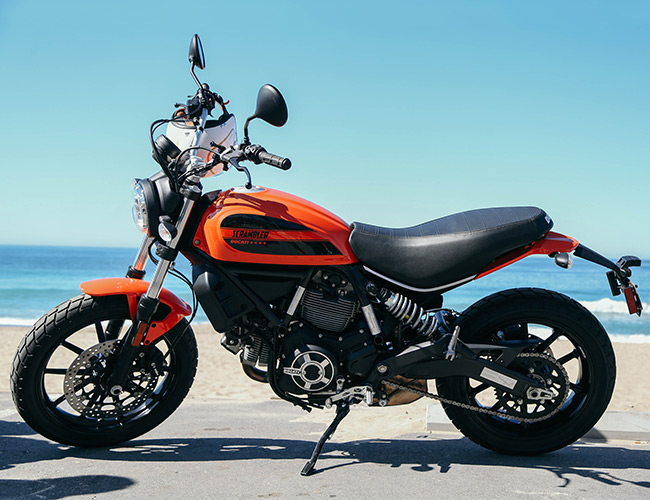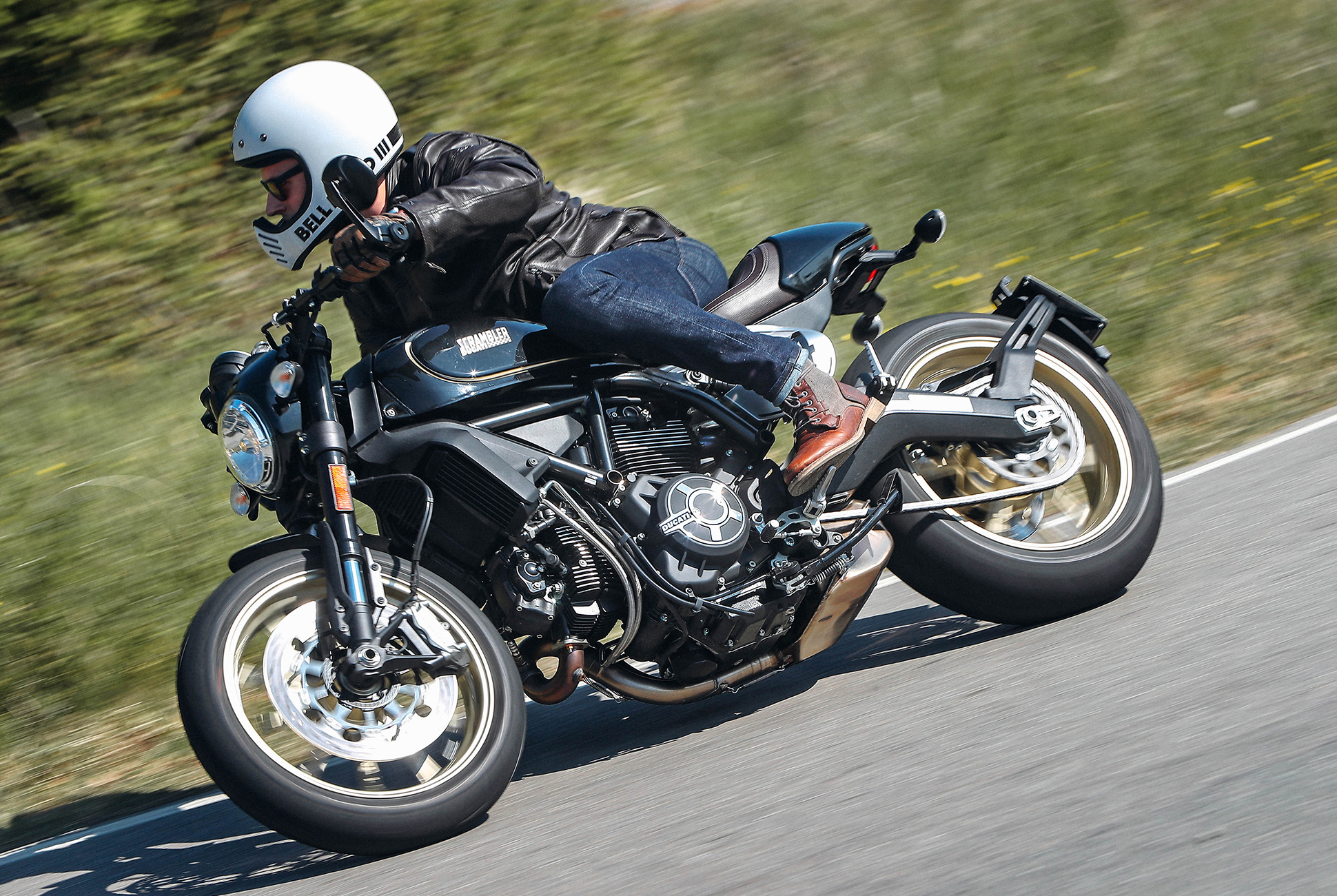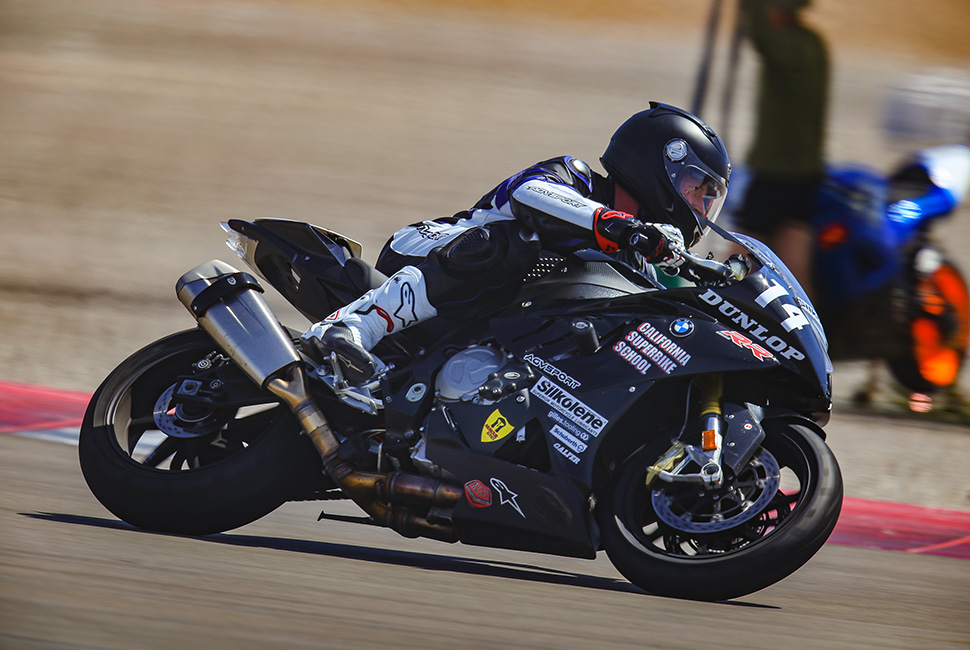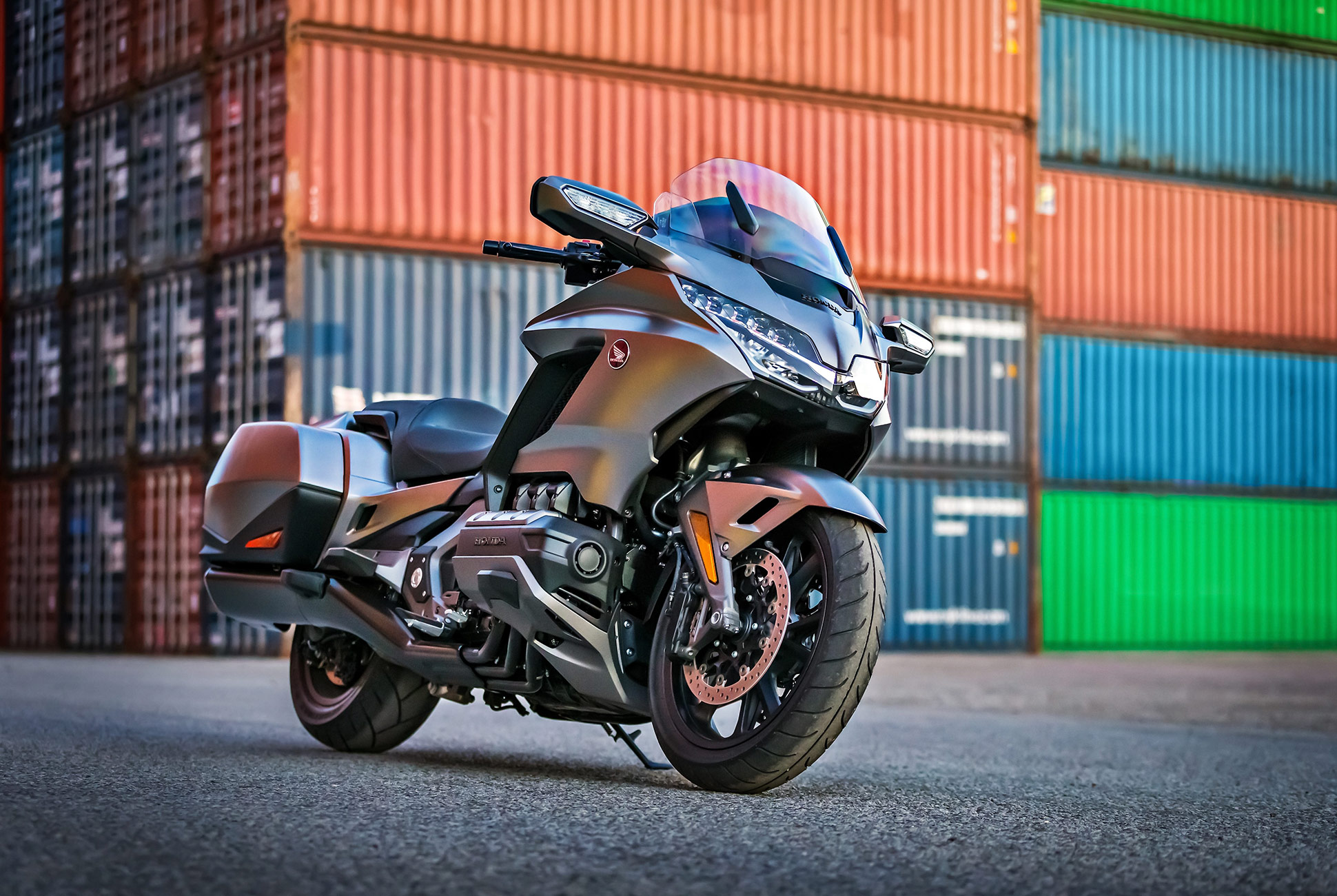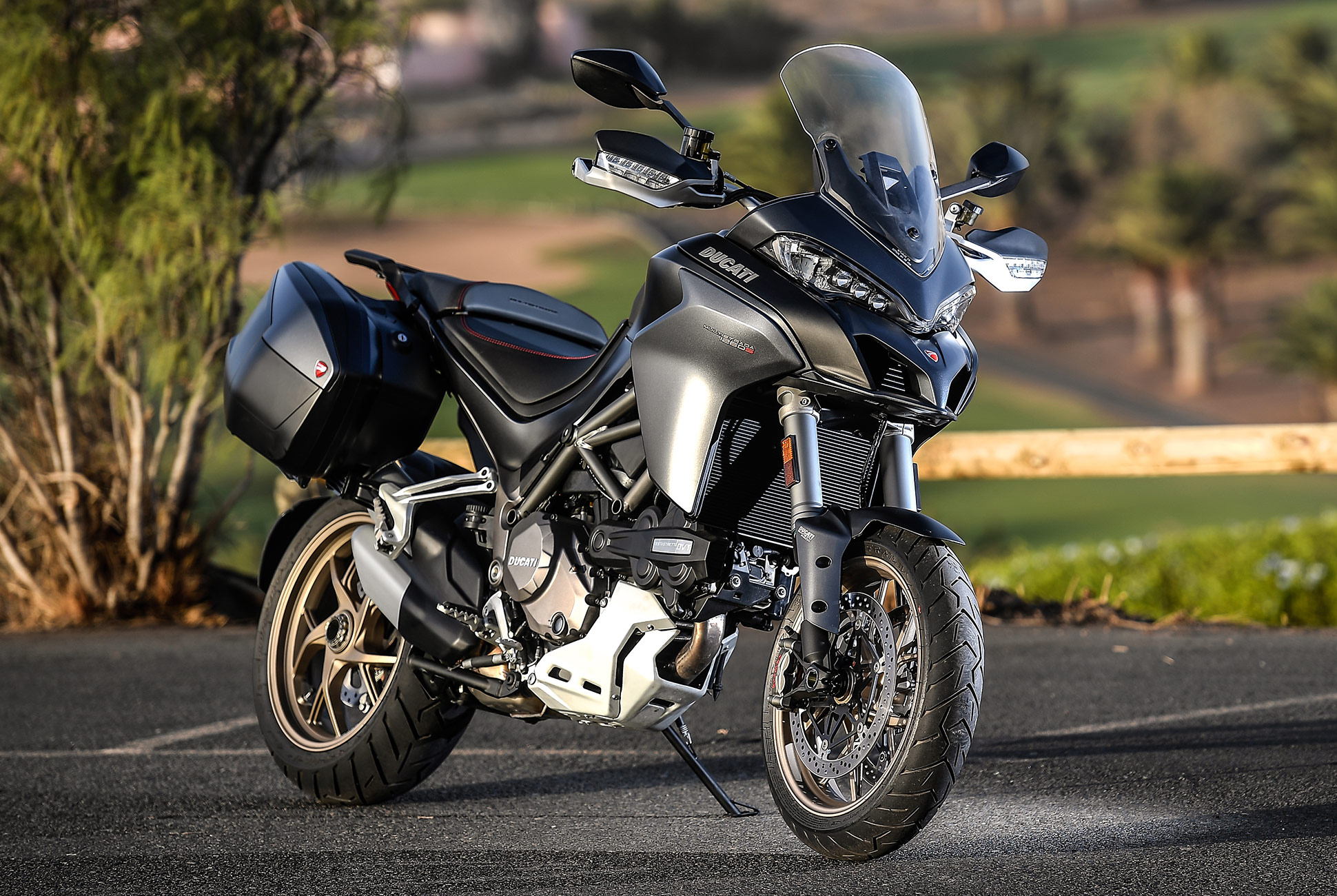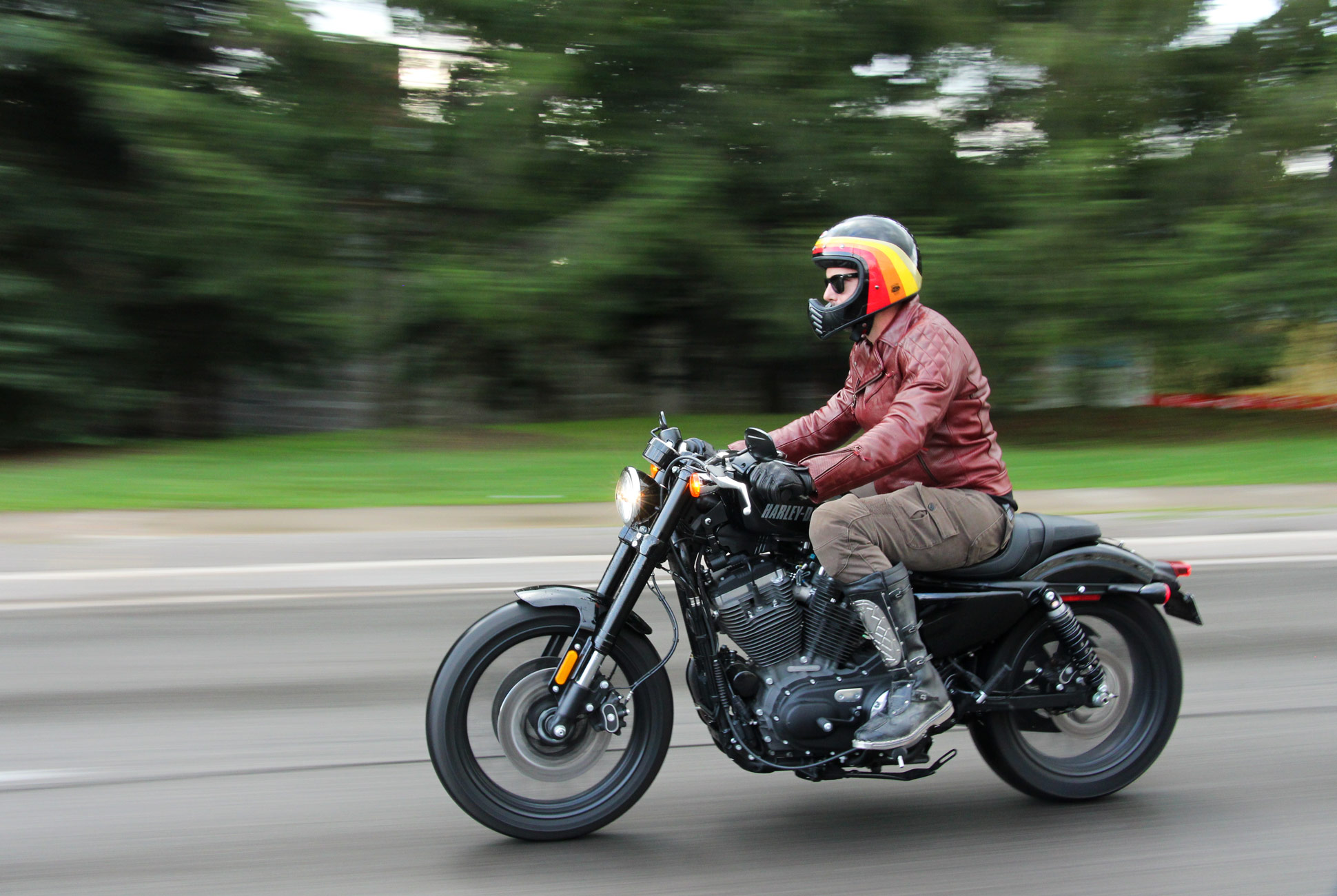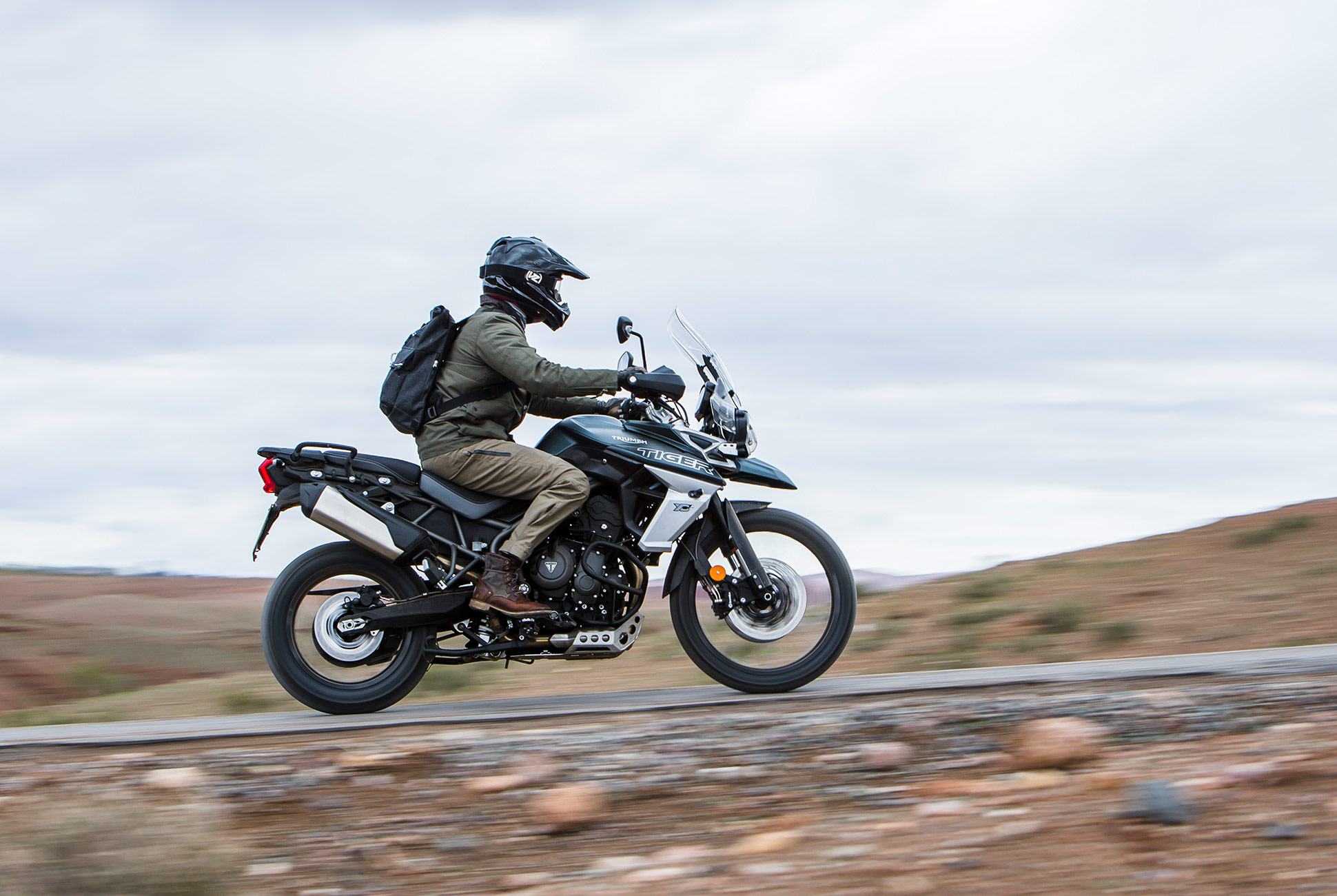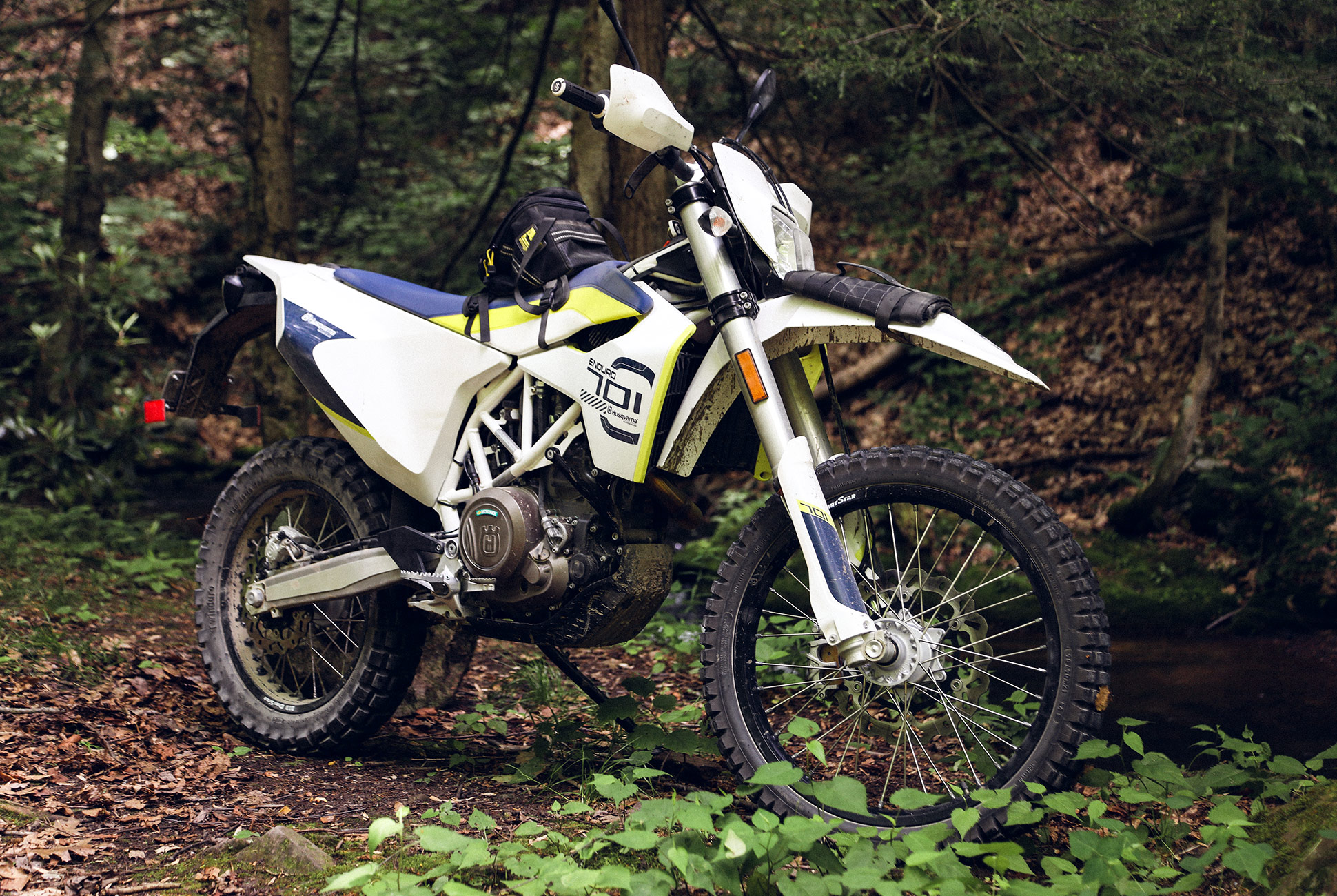In some respects, motorcycles are like power tools: there are almost too many different kinds to even count and dozens of manufacturers building them, but each type is designed to be best at a specific job. Unlike power tools, arguably, motorcycles can stir the soul, take you on adventures and easily morph into a road-worthy companion — more than just a tool for the job. Plus you can, you know, ride them. If you’re new to the two-wheeled world or thinking about diving in, it’ll help to know the difference between sport and sport-touring, what separates a cafe racer from a scrambler and understanding that the term ‘naked’ takes on a whole new meaning in some contexts.
Standard Motorcycles
Standard motorcycles are some of the most common types of bikes on the road. What makes them so popular is their easy-going ergonomics. Their fairly upright riding position with semi-forward set foot pegs doesn’t force the rider to ride with outstretched legs, arms or cramping limbs like on a race bike. You’ll also hear ‘sport standard’ thrown around: all that means is a standard type motorcycle with added performance through power or handling upgrades.
Read the Review: The Perfect First Bike
Cafe Racer and Scrambler Motorcycles
Cafe Racers and Scramblers also slot in under the “standard” banner. Cafe racers tend to have a more aggressive, forward-leaning seating position while Scramblers look more akin to dirt bikes, but at their core, both are specialized standard bikes. You can look at cafe racers as more of a hot rod or an old-school road bike with a healthy amount of racing flare and influence poured on. Scramblers go in the opposite direction and take on an off-road spirit — they’re still recognizable as a standard motorcycle, but with longer suspension travel, spoke wheels and dirt bike-like handlebars, they dial in a dirt-loving personality.
Read the Review: Ducati Scrambler 1100
Sport Bike
Whereas cafe racers started life as standard motorcycles and are then modded for performance, sport motorcycles (also called “sport bikes” or “sportbikes”) are purpose built with speed, agility and cornering in mind from the first concept sketch. Higher seats, lower handlebars and rear-set footpegs characterize sport bikes as the some of the most aggressive bikes to roll off factory floors. They can come with engines of any size or configuration, but the basic idea of a sport bike is to bring the technology, research and development from the track to the street. Sport bikes also tend to boast higher horsepower and torque numbers and usually incorporate lightweight materials like aluminum and carbon fiber — all in the pursuit of performance. Smaller engine sport bikes can be new-rider-friendly, but to get the most out of higher-end halo bikes, it takes a mountain of skill and experience honed over years of riding.
Tip: the term ‘Naked’ refers to a style of sport bike with no fairings, exposing the engine and mechanicals underneath.
Read the Review: BMW S1000RR
Touring Motorcycles
Touring motorcycles are some of the largest bikes on the road, but they don’t carry the extra heft just for heft’s sake. Combining rear set handlebars, forward-set foot pegs and a relaxed riding position behind larger front fairings to break up the wind, they provide a comfortable ride designed for long distances. Luxuries on modern touring bikes don’t stop at the La-Z-Boy ergonomics either, bikes like the Honda Gold Wing offer heated seats and handlebars, satellite radio, GPS and Apple CarPlay for the infotainment system. Cargo space is another characteristic touring bikes have in abundance of as well. You can’t exactly pack for the whole family, but there should be more than enough cargo space for you and a possible passenger.
Learn More: Honda Gold Wing
Sport Touring Motorcycles
Sport touring style motorcycles, in name alone, sound like a perfect balance between the two previous categories, but it’s fair to say the category leans more towards sport in architecture. More often than not, sport touring motorcycles take a strong influence from sport bikes. They feature tighter fairings plus more aggressive engine performance and cornering capabilities but are tuned to be much softer and more tolerable over long distances. Sport touring motorcycles can look like sport bikes at first glance but their raised handlebars, more forward foot pegs, sculpted fairings and larger windshields and panniers turn up the endurance factor. If you want comfort on a long ride, but still aim to drag a knee on your favorite canyon road, a sport touring bike is the compromise you’re looking for.
Read the Review: Ducati Multistrada 1260
Cruiser Motorcycles
Most of what you need to know about a cruiser motorcycle is right there in the name — it’s built for cruising, either around town or down the highway. Traditionally, cruisers have low seats, semi-forward foot pegs and handlebars positioned for rider comfort. However, the cruiser style motorcycle has a whole spectrum to itself. From more relaxed, laid-back riding positions with high handlebars and low seats to forward set foot pegs and handlebars that stretch the rider out for a more aggressive stance, you can find an infinite number of variations of the cruiser, but generally, its silhouette is unmistakable.
Read the Review: Indian Motorycles and Harley-Davidson Shootout
Adventure Bikes
Adventure (also “ADV bikes”) motorcycles are some of the most capable bikes for both on- and off-road. They’re just at home cruising down the highway as they are on a fire trail. The long travel suspension, high seat height and high handlebar position are perfect for all-day comfort and for standing up in the saddle for better control when the road gets rough and rutted. For longer hauls, some modern ADVs have also adopted cruiser style creature comforts — heated grips and seats, radio and GPS systems definitely come in handy when you want to see how far your bike can actually go.
Read the Review: Triumph Tiger 800 XC
Enduro and Dual-Sport Motorcycles
As far as on-road motorcycles go, dual-sports and enduros are the closest you’ll get to street legal dirt bikes designed for everyday use. Where an ADV’s size might hinder its ability to tackle tight trails or be a hassle to pick back up if you go down while off-road, dual-sports and enduros don’t weigh too much more than their dirt bike cousins. In the hands of a good rider, a dual-sport or enduro can easily keep up with a dirt bike on twisty, long and rut-ridden single tracks. While the off-road-on-road style of the bike lends itself to rough riding, the typically narrow seat of one of these bikes is awful for long distance rides. Unless you have a more powerful engine under you, the lack of fairings, windshield and low weight can make these svelte off-roaders a headache on highways.
Read the Review: Husqvarna 701 Enduro

